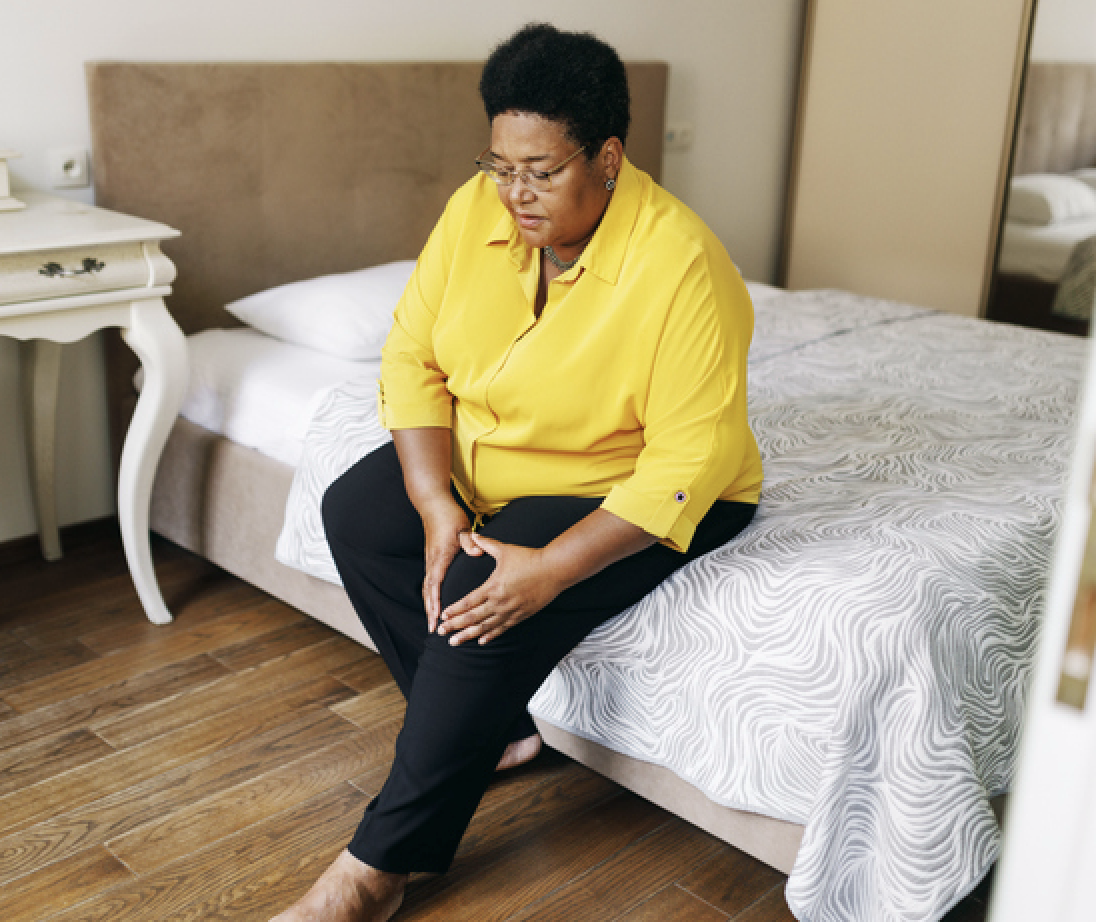Joint Effort: Addressing Stiff and Achy Joints
August 6, 2025

There’s nothing like waking up with stiff joints and feeling achy to remind you that you’re getting older. In fact, a recent survey of 2000 Americans over the age of 28 found that the average person over age 45 physically feels 12 years older than his or her chronological age, with the majority feeling that way due to joint pain. A University of Michigan poll found that 70% of Americans over age 50 experience joint pain at least occasionally. While getting older may be part of the problem, so too are such other factors as overuse of a joint, injury, arthritis, or an autoimmune disease. Joints can be found in your body where one bone meets another, in places like your feet, knees, hips, shoulders, elbows, and fingers. And it’s no joking matter if you are stiff and can’t move properly. Research out of Scandinavia reports that people with the stiffest joints are more likely to die prematurely. Joints are also surrounded by your muscles, tendons, and ligaments, which all work together to help your body move smoothly and flexibly. But due to things like injury or a sedentary lifestyle, all of these tissues can tighten up and lose elasticity, leading you to more pain and less mobility, with ever-present inflammation and stiffness. It’s believed that women are more prone to joint stiffness and pain than men; the CDC predicts that by the year 2040, ⅔ of arthritis sufferers (which is joint inflammation) will be women.
What can you do to proactively lessen the likelihood of stiffness or inflammation in your joints, or reduce the pain and inflexibility that hamper your movement and limit your lifestyle? Of course, which part of your body is experiencing pain and stiffness will suggest what efforts you should take, as the cause of a stiff shoulder joint, for example, may be quite different than the source of pain in your knees. Experts seem to agree that movement and staying active, along with stretching, are essential to keeping your joints lubricated. As The New York Times recently made clear, “Movement is like WD-40 for your joints.” Cartilage resides between your joints, and synovial fluid is essential for nourishing the cartilage and preventing wear and tear on the joint. When you are active and moving, that fluid is circulating and lubricating your joints. What kinds of movement are valuable for joint health? Everything from stretching to such aerobic exercises as swimming, yoga, pilates, or tai chi can help build muscle and support the tissues surrounding joints while being gentle to your cartilage and the joints themselves. Weight-bearing exercises are also important for joint health. What kind of stretching might you want to consider (orthopedists recommend stretching for 5 minutes every morning for better joint health)? A recent Washington Post article considered the stretches associated with the Flexitest, an assessment designed to measure the range of motion of your joints. Whether you can do these stretches tells you a lot about your flexibility, an essential marker for joint health and such underlying concerns as stiff arteries, high blood pressure, and potential heart disease.
Diet can also play a role in joint health and can address inflammation concerns that may cause swelling or pain in your joints. Experts recommend the healthy, plant-focused strategies of the Mediterranean or DASH diets as the best anti-inflammatory way to eat. What specific food might you want to consider to quell the pain and tenderness that comes from chronic inflammation in your joints? No surprises here to anyone already following these diet strategies. Everything from fruits and vegetables to whole grains and green tea should be a part of your regular meals. For some additional ideas, grab a dinner plate and click here.
Finally, you may wonder why you feel more pain or stiffness as the weather changes. In fact, there is increasing recognition that changing weather patterns can affect how pain is processed by your body, including joint stiffness. Individuals can be sensitive to atmospheric changes. For example, cold fronts and damp air may cause your tissues to swell and joints to stiffen. There’s now even a website you can consult to see if weather changes in your area could potentially affect your arthritis and pain symptoms. Joint pain can be exacerbated by hot and humid weather, as well as by cold weather. It seems that there’s no winning when it comes to the possibility of joint pain. Beyond the lifestyle suggestions referenced above, both topical and OTC pain medications may help, along with physical therapy and even steroid injections. If the pain and swelling persist for more than a few days, it’s recommended you seek out expert help both to confirm the problem and suggest treatment options. Bottom line? Joint pain is ever-present for many, but there are ways to prevent its occurrence and manage its symptoms if you are willing (and able) to embrace them.







